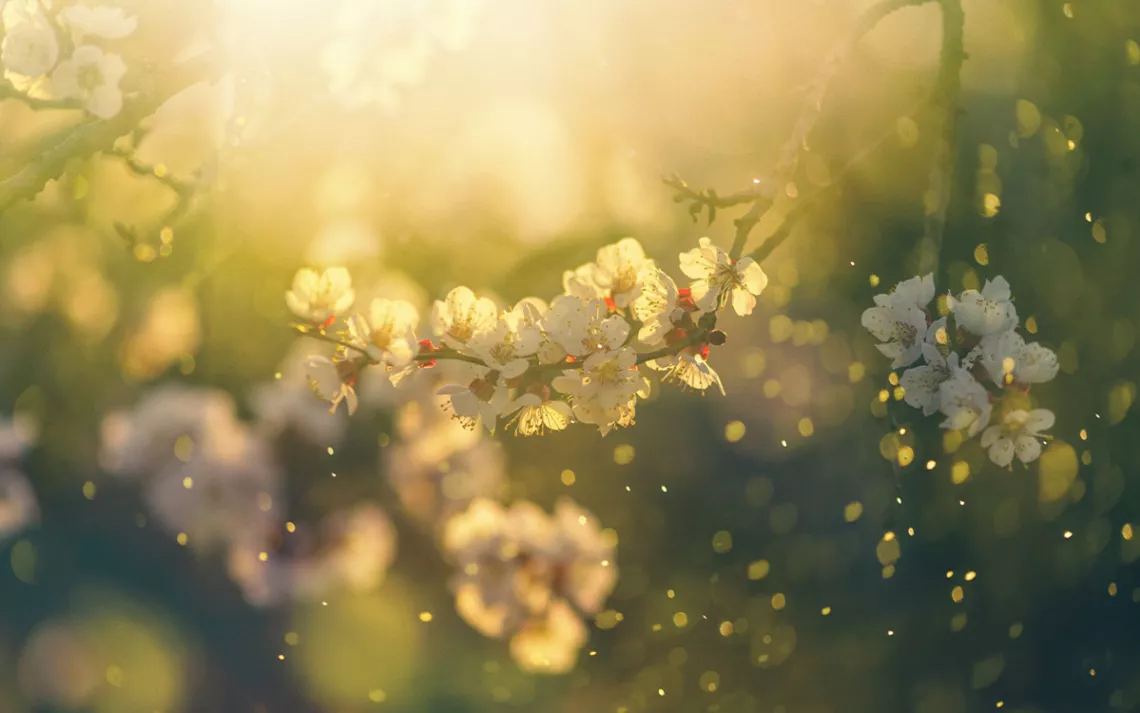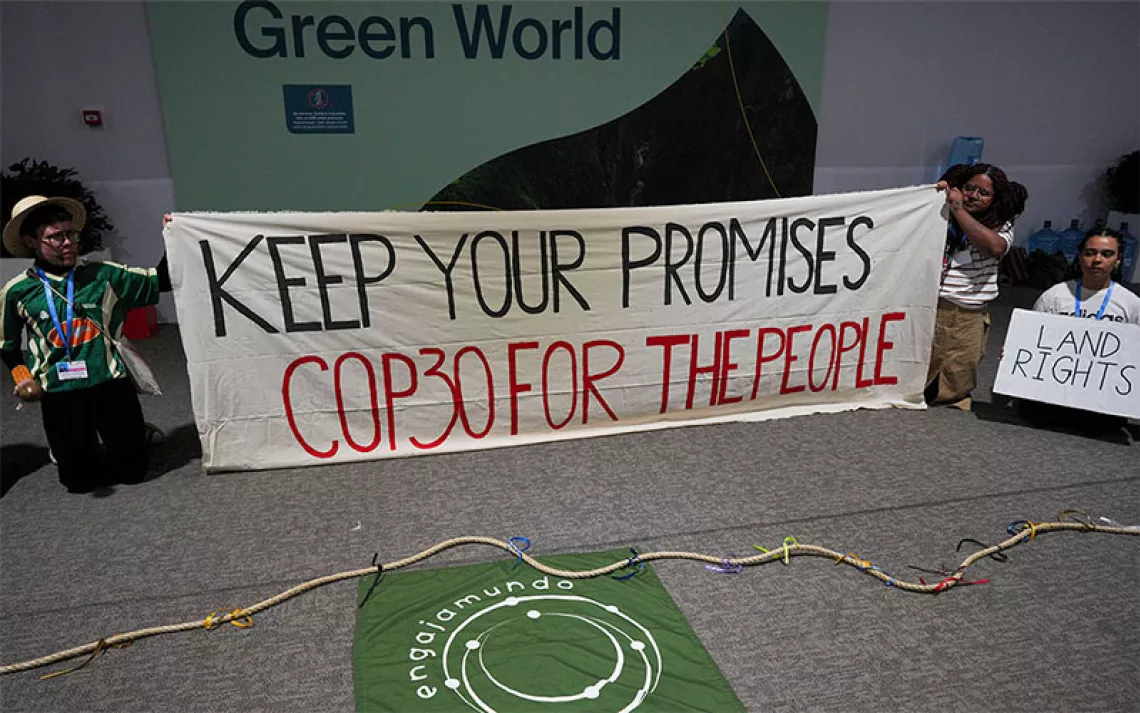ENVIRONMENT EXPLAINED
Climate Change Is Making Your Seasonal Allergies Worse
You’re not imagining things. Here are ways to survive the symptoms.

Pollen from plants such as birch and ragweed is increasingly present in the air, as climate change causes average seasonal temperatures to rise, exacerbating seasonal allergy symptoms. | Photo by mammoth/iStock
Climate change continues to have lasting effects not only on the health of our planet but also on human health. Seasonal allergies, also known as hay fever or allergic rhinitis, is one of many conditions it has made worse. Shifts in temperature and increased levels of carbon dioxide create ideal conditions for plants to produce pollen for longer and also more prolifically, exacerbating the most irritating allergy symptoms, such as sneezing, coughing, runny nose, and itchy eyes. Climate change means these outcomes are also showing up in new parts of the world. But there are solutions.
The first step is understanding the science behind why this is happening.
How does climate change impact seasonal allergies?
Flowering plants only produce pollen during the frost-free period, or the “time between the last frost of spring and the first frost of fall, when air temperature drops below the freezing point of 32 degrees Fahrenheit,” according to the EPA. During this time, buds bloom, allowing pollinators such as bees, hummingbirds, and butterflies access to a flower’s anthers, where they collect its pollen, and stigmas, where they drop off pollen to fertilize the plant. The wind also provides the same service during this seasonal window of time, carrying the powdery substance from plant to plant in the air.
As climate change causes temperatures to increase worldwide, the frost-free period has become longer, giving plants more time to produce pollen. In a recent study of North American pollen seasons from 1990 to 2018, scientists found warming was a primary driver of this timespan lengthening, on average, by 20 days. According to the study, the concentration of pollen also went up by 21 percent. Some plants’ particular biology means they produce more pollen in the face of warming, rather than their growing seasons getting longer.
While many people know that grass and ragweed are some of the biggest culprits when it comes to causing allergies, they don’t often realize that birch trees can be just as guilty, says Beverley Adams-Groom, a senior palynologist and pollen forecaster at the University of Worcester in the United Kingdom.
“The [birch tree pollen] season is not particularly getting any earlier, but it is getting more severe,” she says. “For most birch trees across the world—and this includes the other side of the world, in Japan—pollen production occurs in June, and temperatures [during that month] are increasing.”
That pollen, she notes, is then released in March and April of the next year, worsening the severity of the northern hemisphere’s spring allergy season.
Another factor that affects pollen production is air pollution. Plants convert carbon dioxide into glucose, their source of food, through photosynthesis. The more carbon dioxide there is in the atmosphere, the more nutrition plants get, giving them increased energy to ramp up pollen production. And it’s specifically common allergens such as ragweed and birch that flower earlier and produce significantly more pollen in this scenario.
Who is most likely to have allergic rhinitis?
Initially experts thought places considered arid, such as Arizona and New Mexico, or having a lack of seasonality, as with some regions of California, would escape the climate-related increasing severity of allergies. But, as it turns out, no region is immune.
“California has had really robust rain this past year, which led to a lot of plant growth,” says Neeta Ogden, an allergist and spokesperson for the American College of Allergy, Asthma and Immunology. She also notes that the “superbloom”—when wildflowers bloom in deserts around the same time and in large quantities—could also worsen allergy seasons this year. Allergists have been discussing the phenomenon a lot recently due to the heavy rains some experts say have created excellent conditions for the dormant flowers to make an appearance.
But even if it doesn’t happen, Ogden is sure things aren’t about to get any better. “Allergy seasons have just gotten worse everywhere,” she says. “People everywhere are experiencing symptoms.” There are, however, some who are more likely to suffer than others.
Genetics play a role. If you have a parent who experiences seasonal allergies—as well as food allergies, asthma, and eczema—then you are more likely to have seasonal allergy symptoms too. If both parents do, it’s unlikely you will escape the condition.
But that doesn’t mean others are off the hook.
”There’s also something new happening, where people who don’t have any history [with seasonal allergies] are now experiencing them for the first time in adulthood,” says Ogden.
What you can do to mitigate hay fever symptoms
While preventing allergy symptoms altogether is still something that isn’t well understood, there are plenty of ways to alleviate them. Getting tested by an allergist to understand exactly what you’re allergic to is a good first step, and making sure you see that doctor again when symptoms start to bother you is equally important.
“You really have to be careful with allergies and just hitting the pharmacy because there are so many mixed medicines and huge offerings out there,” says Ogden. “An allergist can, based on your symptoms, treat you more efficiently.”
General awareness of the plants and allergy seasons in your area is also key. Ogden suggests downloading a pollen app, such as Klarify, My Pollen Forecast, or Allergy Plus to your phone to keep track of what’s going on around you so you can make informed decisions.
“Maybe avoid a run or a golf game on a very high-pollen day,” she says.
If you do have to go outside, wearing sunglasses and a hat can help create a barrier that will make it harder for the fine powder to reach you, and washing clothes you’ve worn outside can be beneficial too. Rinsing out your eyes and nose with a saline solution, washing your hair before going to bed, keeping your windows closed, and having an air purifier in your home are other ways to keep symptoms at bay.
And always, says Ogden, take allergies seriously.
“People can be very casual about them,” she says. “But allergies do have lasting effects on things like sleep, as well as kids’ attendance at school and work days missed for adults. It’s really about quality of life.”
 The Magazine of The Sierra Club
The Magazine of The Sierra Club



